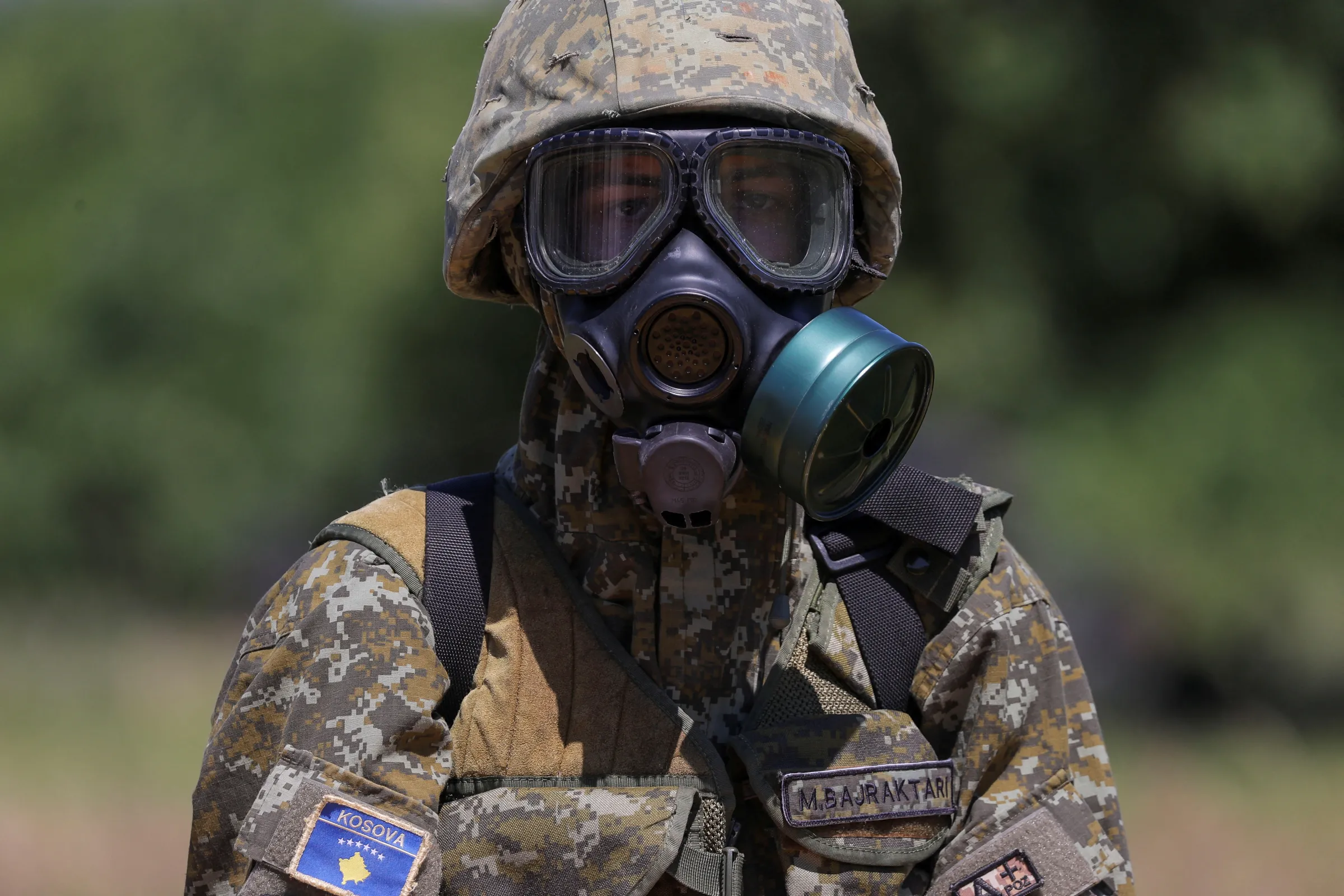Military spending eats into Africa's climate finance

A member of the Kosovo Security Force (KSF) takes part in a military exercise with troops from U.S. and other NATO allied countries, as part of Defender Europe in Babaj i Bokes, Kosovo June 3, 2025. REUTERS/Valdrin Xhemaj
What’s the context?
Conflicts in Gaza and Ukraine pushed global military expenditures to $2.7 trillion in 2024 - leaving less for climate financing.
- Military spending comes at cost of climate
- African leaders call for grants over loans
- Private sector called to step up
JOHANNESBURG/BRUSSELS - Global military spending following the outbreak of conflicts in Ukraine and Gaza is at its highest since the Cold War, which African leaders warn is leaving less international aid available to help their countries adapt to the climate crisis.
At the second African Climate Summit (ACS) in Ethiopia last week, African heads of state, researchers and activists made a plea to international donors to help the continent withstand floods, droughts and heatwaves.
"We're now living in a new world order where security measures are prevalent to finance," said Patrick Verkooijen, president of the Global Center on Adaptation (GCA), which is based in the Netherlands and Kenya, and leads the Africa Adaptation Acceleration Program (AAAP).
"So the fiscal space to invest in climate and to invest within that in adaptation finance, by default, is smaller, and hence we need to be smarter on how we do business," he told Context.
The AAAP has put billions of dollars into adaptation projects - from mangrove restoration along West Africa's coastline to organic waste recycling in Nairobi - since 2021.
Africa is the continent most impacted by climate change, despite contributing less than 10% to global carbon emissions, according to the World Meteorological Organization.
The summit announced a second phase of its adaptation programme and called on international partners to help reach the $50 billion goal to expand efforts to cope with climate change.
But funding competition is rife following a global reduction in humanitarian aid and a spike in defence spending from the United States to Europe.
"I think that since the war in Ukraine, the focus has been on defence spending ... at the detriment of the climate project," said Macky Sall, who was president of Senegal from 2012 to 2024 and is now chair of the Global Center on Adaptation.
"Certainly defence issues are important, but climate (policies) must be maintained because the climate agenda is the one we have in common," he said in an interview with the Thomson Reuters Foundation.
Africa needs some $70 billion per year to hit adaptation targets, according to research organisation Climate Policy Initiative (CPI).
But in 2023 this figure was about $14.8 billion and is at risk of falling as donors cut aid, CPI found.
In comparison, world military expenditure has increased in all regions - reaching $2.7 trillion in 2024 and rising by 9.4% from 2023, according to the Stockholm International Peace Research Institute (SIPRI).
This is the steepest increase since the Cold War and the 10th consecutive year of growth.
"We have to acknowledge the reality that defence spending is probably not going down anytime soon," said Florian Krampe, acting director of the SIPRI Climate Change and Risk Programme.
He added that recent breaches of Polish and Romanian airspace during Russian attacks on Ukraine have further underlined the priority.
But climate change can further intensify competition for resources and increase the probability of conflict in fragile regions, he said - which means defence spending should take the warming planet into account.
Krampe said defence departments should budget for environmental innovations to provide long-term resilience for militaries and civilians alike.
One example is water harvesting by militaries, whereby water vapour is extracted from the air to provide drinking water for troops in arid locations, an innovation which could also bring benefits to civilians.
Adaptation as investment
The GCA called on the private sector to step up and fill the shortage in climate-adaptation funding.
Investing in tree planting, building flood barriers or desalination plants are all examples of adaptation methods that also create jobs and investment in development, according to GCA.
The World Resources Institute, a research non-profit, found that for every $1 invested in adaptation, over $10 can be generated in benefits over 10 years.
Verkooijen referenced a report by Singapore's sovereign wealth fund that said that investing in adaptation initiatives is a $4 trillion economic opportunity globally, something he said African countries should capitalise on.
"In Asia, the share of adaptation finance from the private sector is in the order of 35%. In Africa, it is 6%," Verkooijen said.
The type of investment to support Africa's readiness for climate shocks was also a key priority for the summit attendees.
African countries have a combined debt burden of more than $1.8 trillion, United Nations figures show.
This means they spend nearly three times more on servicing external debt than they receive in climate finance, according to the Institute for Economic Justice think tank.
"At the COP30 (U.N. climate summit), African states must press for fairer (funding) models," Nafi Quarshie, Africa director of the Natural Resource Governance Institute think tank, said in a statement.
"At the same time, richer countries and international partners must step up with finance at the scale required," Quarshie said.
(Reporting by Kim Harrisberg; Editing by Ayla Jean Yackley and Jack Graham.)
Context is powered by the Thomson Reuters Foundation Newsroom.
Our Standards: Thomson Reuters Trust Principles
Tags
- Government aid
- Climate finance
- War and conflict


















